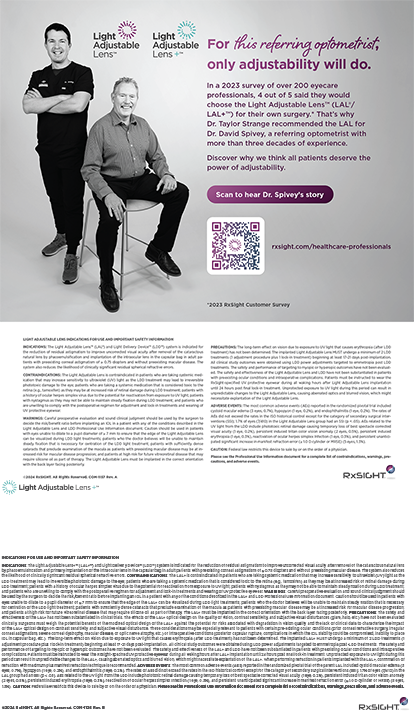Years ago, as a new medical student, I found the language of medicine to be exciting and the most innovative and universally applied format ever brought into the realm of medical communication. Learning how to transform a patient's entire medical history into the subjective, objective, assessment, and plan—or SOAP format—was like learning a well-cadenced symphony. When it was organized and presented well during morning rounds, not a single pertinent fact was left out or imperfectly positioned in the presentation. As a result of my passion for the SOAP format, when I began my ophthalmic practice, I documented on paper patients' visits in such detail that any of my colleagues would be able to decipher my plan and determine if it had been successful or not.
DIGITAL DILEMMA
I have always loved the advances of the digital age and have considered myself an early adopter of new technology that holds promise. It was in this vein that I fully embraced the “unfunded mandate” to incorporate an electronic health record (EHR) system. Despite my enthusiasm for technology, I was quite shocked at the lack of SOAP organization with EHR systems. The inane and unrelated data fields that suddenly became the metrics by which I would win or lose approval in the new arena of medical data management were perplexing. The new array of data fields threw the SOAP format out the window. In time, it became obvious to me that the majority of the EHR systems brought to market were designed by software engineers and reviewed by nonmedical professionals.
After several months and expensive steps toward customizing the EHR system in which I chose to invest, I became comfortable enough to use the technology, find relevant information on its myriad fields, and come up with something recognizable as a plan.
A RETURN TO PAPER
To quote an old adage, “the only constant is change.” I left my practice in Arizona to accept a position in Utah. When I started at Hoopes Vision, the practice had not yet decided which EHR system to adopt but was waiting for the right product and right time to make the investment. In a move of genius, my new practice chose not to purchase an EHR system.
Going back to paper charts stunned me with the realization of how much I had given up to do things digitally. I had become an “EHR zombie,” a term I use to describe how I had given up hope of anything better and willingly accepted that EHRs were cumbersome but necessary and therefore acceptable. With the return to charts, the world was once again as it should be!
PATIENTS FIRST, TECHNOLOGY SECOND
It became painfully clear to me that what I lost in the rush to adopt EHRs was the patient. Instead of being able to care for, cure, and empathize with my patients, my attention had been diverted to nurturing a complicated digital processor not of my making or liking. In my acceptance of EHRs, I committed to ones and zeros and lost eye contact with patients and the opportunity to empathize with fellow human beings.
Hoopes Vision has yet to adopt an EHR system. Every other aspect of the practice is computerized. As far as health records, however, patients continue to come first, and my colleagues and I continue to wait for that one, ultimate, SOAP-driven package that is as seamless as paper. Only then will I feel comfortable placing a laptop between my patients and me. n
Robert P. Rivera, MD
•
ophthalmic surgeon at Hoopes Vision, Salt Lake City
• rpriveramd@aol.com


